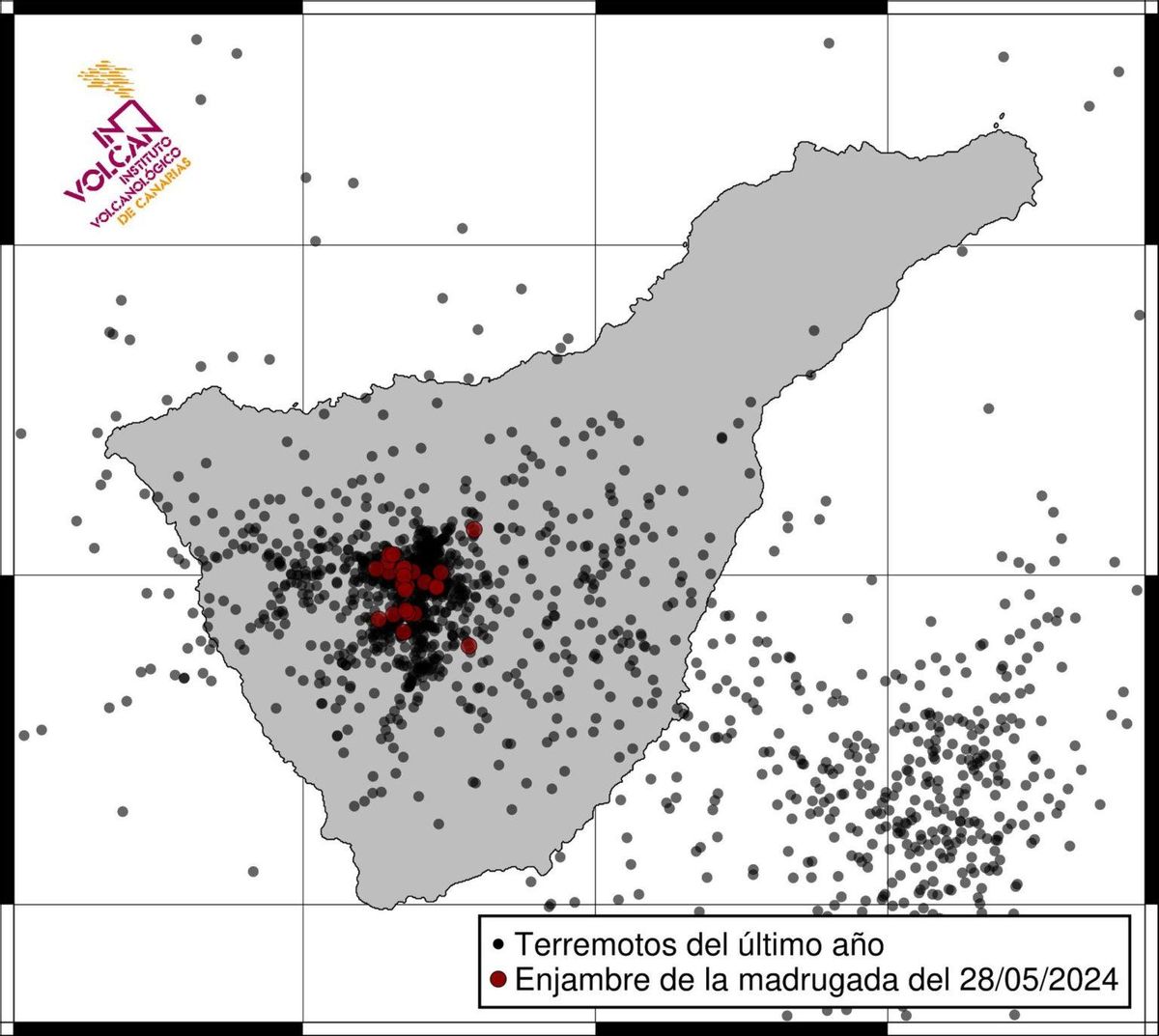The Seismic Network of the Volcanological Institute of Canary Islands (INVOLCAN) has detected a seismic swarm in Tenerife in the recent hours, arousing interest and concern among residents and scientists in the region. From 01:42 to 06:08 on Tuesday 28th of May, dozens of small earthquakes were recorded, with 26 being pinpointed. The hypocentres of these seismic movements were concentrated in the southwest of the Las Cañadas del Teide caldera, at depths ranging from 5 to 10 kilometers. The largest earthquake measured 1.2 on the Richter scale.
Since June 2017, Tenerife has experienced a significant increase in microseismic activity. This phenomenon has been characterized by 113 swarms of low-magnitude earthquakes, three of which correspond to hybrid seismic events. This rise in seismic activity is attributed to a pressurization process of the volcanic-hydrothermal system, possibly linked to the injection of magmatic gases into the system.

Graph depicting seismicity in Tenerife over the past year / Involcan
What does this seismic swarm signify?
[–>
According to experts from INVOLCAN, the recent seismic activity does not pose a danger to the population. The small earthquakes recorded do not indicate a shift in the likelihood of a volcanic eruption in Tenerife in the short or medium term. Although the rise in seismic activity may cause concern, it is vital to remember that these events are common in active volcanic regions and are part of the natural behaviour of the island’s volcanic system.
[–>
Continuous monitoring of seismic and volcanic activity in Tenerife is essential for the safety and preparedness for potential future events. Seismic networks, such as the one managed by INVOLCAN, play a crucial role in surveillance and analysis of these phenomena, providing valuable data that aids in better understanding the behaviour of the volcanic system and in making informed decisions.
















